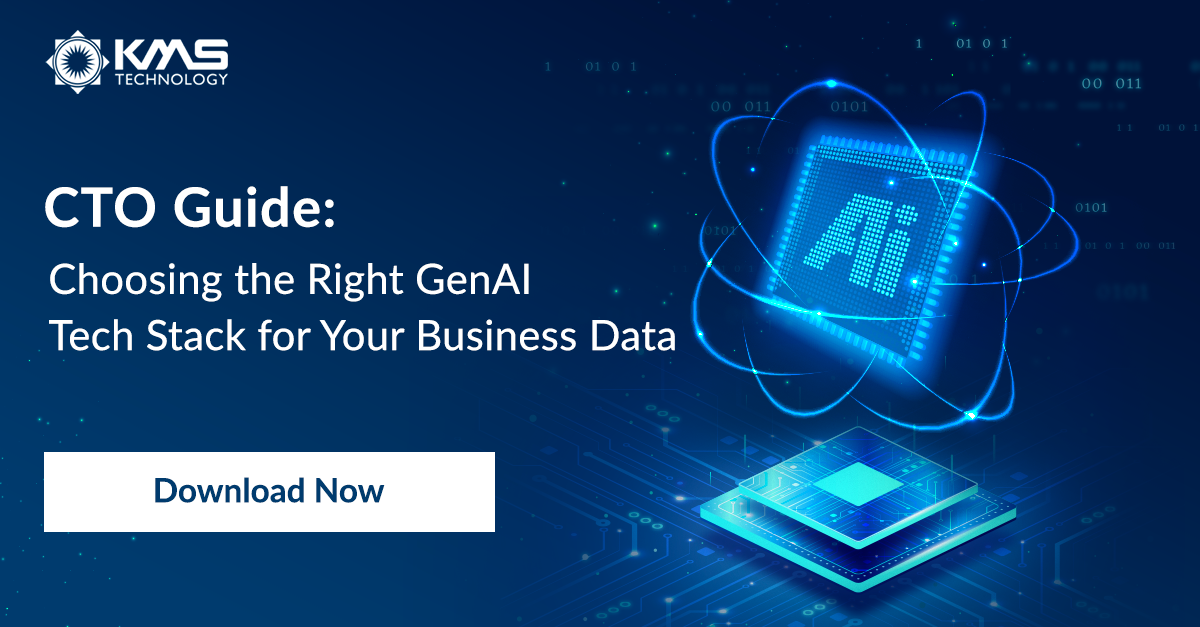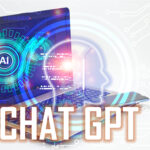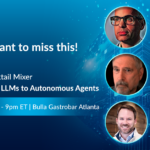Q & A and Recap C-Suite Chat: Early Adoption of GenAI for Software Products
In 2023, we’ve seen generative AI take the market over by storm and shift the way we work, write, think, and more.
In this webinar, Frank Moyer, CTO at Kobiton joins Jeff Scott, SVP of Delivery at KMS Technology, to share revolutionary insights on how his business teams have incorporated early adoption of Generative AI, and as a result, launched multiple successful software products in the market.
Topics discussed in the webinar include:
-
How to adopt GenAI quickly, efficiently, and with as little friction as possible
- Ways to measure the success of your GenAI initiatives
- The best GenAI tools and technologies to consider for your teams
- Common pitfalls to avoid in your company’s adoption journey
- Tips to manage internal change and embrace a culture around GenAI
- Preparing for the future of GenAI and upcoming trends
Check out the webinar on-demand below:
Meet the Speakers:
- Frank Moyer, CTO at Kobiton
Frank’s understanding of LLMs, GenAI trends, and early adoption of GenAI for Wingman and Kobiton have made him a technology pioneer in the software product space
- Jeff Scott, SVP of Delivery at KMS Technology
Jeff is helping drive R&D for KMS GenAI initiatives and brings multiple years of experience leveraging artificial intelligence in KMS-owned product companies.
Read on for the detailed Q&A:
- Can you give some background on your experience with incorporating GenAI as an early adopter?
My journey with AI began in the fall semester of 1988 in New York City when I was a student at Columbia University. Our professor, Professor Stalfo, gave us our first assignment, which was to generate a 5×5 crossword puzzle using AI. And you’re thinking, that’s easy, right? But at the time, computing power wasn’t near what it is today.
I had a 4×4 crossword puzzle working. As a student of Columbia, we had 1 hour of computing time on Princeton’s Cray supercomputer. That meant that I could get from my 4×4 to my 5×5. And it ran very quickly on the supercomputer. The reason I aced that project was because I had access to a supercomputer. Now fast forward to 2015, when cloud computing is commonplace. We have Google Open Sourcing, TensorFlow, their machine learning library, and PyTorch coming on the scene as an alternative to TensorFlow.
I was in the middle of a company called Wingman, and I hired KMS to help me build the Wingman app. The problem Wingman was solving was when you are at a conference and you are meeting someone, it provides real-time information about that individual. “What do we have in common?” And give social links in real-time within 2 seconds, and the KMS team delivered. We were getting 80% accuracy when that was built.
In May of 2018, Google announced that they were going to put machine learning onto the mobile device with Google Vision. I remember being on a call with a KMS team saying, “Guys, this is it. This is how we get from 80% to 96% plus”. Within a month, we had it out there with Google Vision running in our mobile app.
Now we enter this new phase where Kobiton also leverages KMS to help us use artificial intelligence. We’ve been building AI into Kobiton for the past four years, using it to build better products and in the software development lifecycle.
This has been a very exhilarating journey for me, having started 35 years ago with artificial intelligence. Where we are today is the most exciting time for me through that journey. We are in such a great place to be.
- Can you share some GenAI tools and technologies worth investigating? What would you recommend others to explore?
I’ll provide those tools. But aside from the tools, I want to talk about the mindset. Think of generative AI as a great colleague who’s by your side 24/7, a friend.
That mindset elevates the quality and the efficiency of your work. Generative AI has the entirety of the Internet at its fingertips. She’s got you covered, from simple definitions to important considerations. She’s not judgmental. And most importantly, not biased.
If you were to ask a colleague, for example, I’ve got to store some data somewhere. “How should I store this data?” They might say to use Postgres because they’re a Postgres database administrator. You can get an unbiased view of what the options are and the pros and cons of those options through generative AI.
To get really practical on the ways that I use it in my work. For example: I use it to build better UI and UX design at Kobiton. Generally, generative AI is used for text, “How do you use it for UI design?” I would type in and describe what the user experience screen looks like, and ask questions, “How could I make this better?”
AI has vast indexes of knowledge and can do the heavy lifting. But we as humans have this ability to reason and a depth of experience to make nuanced decisions and evaluate feedback from the machines. So it becomes this collaboration, not competition.
“AI is not going to take our jobs. AI is going to take the jobs of those who don’t leverage AI.”
Ask yourself, “How so I make my next task better by leveraging generative AI?” And that’s going to lead to an overall paradigm shift, a mindset shift for you as an individual. Maybe it will spread to others in your organization around how you deliver a better work product.
- How do you create that culture of buy-in for generative AI within your teams? And how do you go about training them to be effective users?
What we’re going through right now is a technological tide reshaping of the very core of businesses. For 98% of the world, 99% of the world, it’s reshaping our opportunity and how we deliver, how we change our work process.
What I noticed early on at Kobiton was there were three types of employees with this tide reshaping. The first, you had the pros, the ones who were surfing the wave, and they were all in. The second, you had the ones who were paddling cautiously “Should I use this?”, “How should I use it?” And then you had the skeptics, the ones who were afraid of getting swept away by this technology. I think this is common in technology in general, that there are pioneers, the cautious, and the skeptics.
It is at the individual employee level that impacts the overall business. And it’s the sum of those parts that have a significant impact on giving you a competitive advantage.
What we’ve done at Kobiton is to spot where people are on that journey. “Are they surfing like the pros?”, “Are they paddling?”, “Are they pushing back?” And we celebrate the pioneers. So we use their examples as beacons of success and laud what they’ve done for the cautious. We nudge them. The skeptics are the ones who require our utmost attention and empathy because they’re scared. A lot of people are scared right now. And it’s our job as leaders to help them get through that fear.
It’s also about the people we’re hiring. We’ve changed how we interview people to make sure that when they come on board, they’re embracing this technology, and that they’re not going to be the skeptics. The more pioneers we have, the faster we change, the faster we adjust, and the faster we out-navigate our competition. So it’s about a variety of things that we do to embrace this in our culture.
- What is the biggest takeaway regarding the early adoption of GenAI in software development today?
I think of it as this giant puzzle and all these processes of people putting the puzzle together. How we do that efficiently and with high quality makes all the difference in how we beat our competitors.
And what is important to do is put a little AI magic throughout that software development lifecycle. Constantly ask the question, “How can this improve the specific function I’m doing?”
It’s also about reassessing our job responsibilities. We’re shifting now from coders to editors, from testers to editors. And the more we can do to delegate and edit so that we have accuracy, the faster we’re able to deliver the product.
My nugget of advice is to dive into those AI waters, but with a keen eye on the horizon because things change. A good example, is Copilot. Copilot was such a big thing and I say “was” because there’s a new kid on the block Cursor that is a lot better than Copilot. We’re now working with the KMS team to trial it and see its results compared to Copilot. So you always have to assess the process, the tools, and the technology because it’s going to be a wild technological wave that we’re riding.
- What are your predictions for the future?
I think in the not-too-distant future, we’re going to have customized training models based on our own personalized training data where I can take the content, for example, of this webinar or phone calls that are recorded and feed that to my own personalized generative AI that would provide to Susan. So that’s in the not-too-distant future.
Taking that a little bit further out, the next phase is miniaturization. We took AI and put deep learning inference engines on mobile devices, and now we can put generative AI inference engines at a reasonable size. And I think Apple is doing a lot in this regard with iOS 17, Kobiton has been working on allowing that inference in real-time. Now I’m out in a social setting and I’ve got glasses on, and it’s feeding prompts for me to say to make sure that I use the right words in the right moments.
Right now, we are living in the most exciting of times. I encourage everyone to embrace and enjoy every minute of what’s happening right now.
How KMS Can Help
Keeping up with the rapidly shifting world of generative AI, the litigation in flight, and the new tools available can be challenging while working your day job.
Our generative AI consultants can help. Our dedicated experts are on top of the latest research and developments in generative AI, with decades of experience in implementing a myriad of AI solutions. We’re driven by real, practical use cases that create ROI—not hype.
We can help you roadmap and build your generative AI solutions, all while protecting your IP and data. In fact, we’ve written guidance on how best to do just that.
Talk to our team to learn more.








